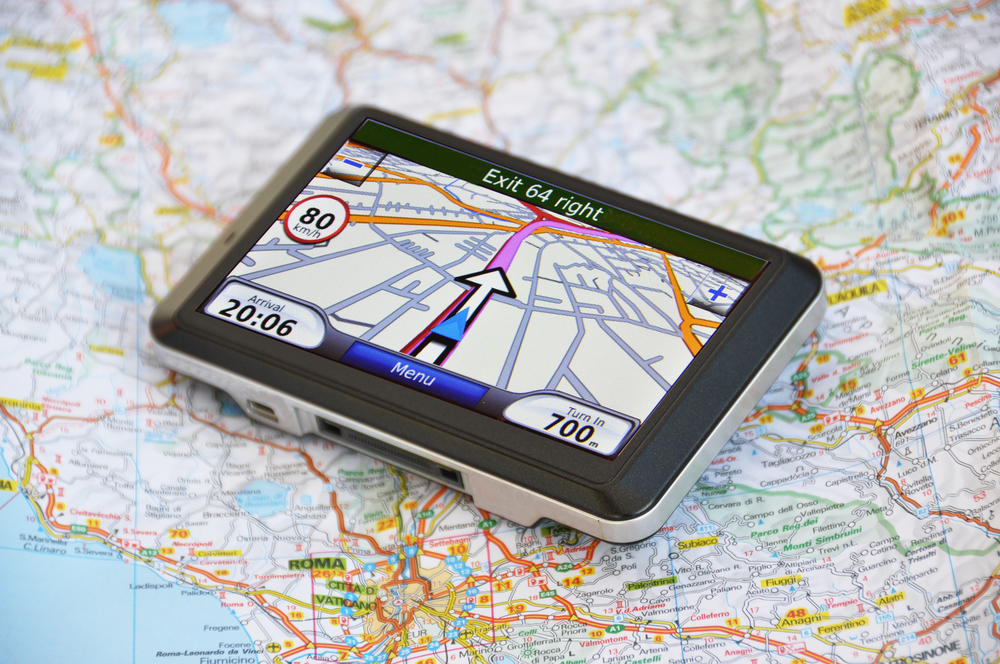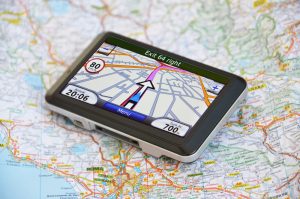Israel’s Global Positioning System: Navigating Through Challenges
The Global Positioning System (GPS) operates through a network of 24 satellites orbiting the Earth at an altitude of approximately 20,000 kilometers.

In the realm of satellite-based navigation, the global positioning system (GPS) stands as a cornerstone of modern
technology, offering an unrivaled tool for everything from everyday commuting to advanced surveying applications.
Israel, with its history of technological innovation, has developed its own sophisticated approach to GPS technology,
navigating through complexities and leveraging its potential to serve national interests and global markets alike. This
journey delves into how a country known for its tech prowess has integrated GPS to enhance its strategic, economic,
and societal landscapes, showcasing the adaptability and importance of GPS technology in the 21st century.

This article will explore the intricacies of GPS technology, starting with its fundamental meaning and application in
various domains such as surveying, and expanding into the historical development of GPS in Israel. It will examine the
evolution and current applications of GPS within the nation, detailing how it serves not just in navigation but in a
diversity of sectors including defense, agriculture, and urban planning. Furthermore, the discussion will venture into
the future prospects of GPS in Israel, contemplating the innovations and challenges that lie ahead. In doing so, the
article aims to provide a comprehensive overview of Israel’s involvement with global positioning system technology,
from its definition and functions to its significant impact and potential for advancement.
Understanding GPS Technology
How GPS Works
The Global Positioning System (GPS) operates through a network of 24 satellites orbiting the Earth at an altitude of
approximately 20,000 kilometers. These satellites circle the planet twice a day and are positioned so that from any point
on Earth, four satellites are usually visible at any time. GPS devices calculate their position by measuring the distance
to multiple satellites. Using a process called trilateration, GPS receivers use the time it takes for signals from these
satellites to reach the receiver to calculate the user’s exact location, speed, and elevation.
Components of GPS
GPS consists of three major components: the space segment, the control segment, and the user segment. The space
segment is composed of the satellite constellation providing global coverage. The control segment includes ground
stations located worldwide, which monitor the satellites, update their positions, and ensure the accuracy of their atomic
clocks. The user segment consists of GPS receivers that can be found in devices like smartphones, vehicles, and
specialized navigation tools. These receivers process the signals from the GPS satellites to determine location and time.
Applications of GPS
GPS technology supports a wide array of applications across various sectors. Key uses include navigation, where GPS
provides directions for travel by car, plane, or on foot. In tracking, GPS devices monitor the movement of people and
goods, enhancing logistics and fleet management. For mapping, GPS helps create detailed maps of the world, crucial
for urban planning, conservation, and disaster management. Additionally, GPS plays a vital role in timing, synchronizing
time in critical infrastructure like telecommunications and the financial sector. Its precision and reliability make GPS
indispensable in fields ranging from agriculture, where it aids in efficient farm management, to emergency services,
where it speeds up response times and improves public safety.
History and Development of GPS in Israel
Early Adoption
Israel’s journey with GPS technology began well before the official system was operational. In the 1960s, during the Six-
Day War, the absence of GPS led to reliance on rudimentary navigation methods like Global Navigation & Planning
(GNC) maps and hand-drawn maps. These early experiences underscored the critical need for advanced navigational
tools in Israel.
Major Milestones
The significant development in Israel’s GPS history was marked by the launch of Ofek-1, its first satellite, on September
19, 1988, from a locally built Shavit launch vehicle. This launch not only signified Israel’s entry into the space age but
also laid the groundwork for advancements in GPS technology. By joining the United Nations Committee on the
Peaceful Uses of Outer Space in 2015, Israel solidified its commitment to expanding its GPS capabilities, which has
been evident through various international collaborations and the development of technologies like Waze. Waze,
initially developed by Ehud Shabtai as FreeMap Israel, revolutionized digital mapping in Israel and globally, leading to
its acquisition by Google in 2013 for $966 million.
Collaborations and Partnerships
Israel’s GPS development has been significantly enhanced through international partnerships. Collaborations with
global entities like NASA have been pivotal. For instance, the partnership announced during the 2015 International
Astronautical Conference in Jerusalem focuses on joint missions and sharing of space exploration technologies.
Moreover, cooperative agreements with countries like India, which involve installing Israeli-produced telescopes on
Indian satellites, highlight Israel’s ongoing commitment to leveraging global partnerships for technological
advancement.
Current GPS Applications in Israel
Military Applications
Israel’s use of GPS technology extends significantly into military operations, where it employs sophisticated methods
like GPS jamming and spoofing. These tactics are crucial for national defense, particularly in preventing enemy forces
from accurately navigating using GPS-guided systems such as missiles, drones, or vehicles. For instance, during
conflicts, Israel has strategically used GPS jamming to hinder the opponent’s use of precision-guided munitions, which
rely on GPS guidance to accurately hit their targets. Additionally, GPS spoofing has been utilized to misdirect enemy
soldiers or assets, convincing them they are in a different location, thus safeguarding key areas from potential threats.
Civilian Uses
Despite the strategic military applications, the interference with GPS also impacts civilian sectors, particularly aviation
and maritime navigation. The jamming and spoofing practices have led to significant disruptions in civil aviation, posing
risks to safety and necessitating a return to older navigational practices. For example, pilots have reported needing to
rely on visual aids and manual navigation due to unreliable GPS signals, and there have been instances where
commercial aircraft were forced to alter their courses or return to their departure points.
Technological Innovations
On the technological front, Israel continues to innovate in the realm of GPS applications. A notable development is the
creation of a tactical navigation application similar to Waze, designed for the Israel Defense Forces (IDF) for ground
operations. This app integrates maps with crucial waypoints and a comprehensive ‘enemy awareness’ guide, enhancing
the IDF’s operational capabilities during missions. Additionally, advancements in GPS-related technologies have
supported the Mossad in providing unique technological support to the IDF, including equipment for safely scanning
environments and specialized robots for reconnaissance and combat tasks in challenging conditions.
Future Prospects of GPS in Israel
Upcoming Projects
Israel is set to enhance the accuracy and reliability of GPS-based services with the development of a national
positioning infrastructure. This project will deploy a network of ground-based reference stations, working in
conjunction with satellite-based GPS signals, to provide precise positioning data for various applications. Additionally,
the integration of GPS technology with autonomous vehicles and smart transportation systems is underway. Israel is
developing advanced driver assistance systems (ADAS) and autonomous driving capabilities, which heavily rely on
accurate GPS data for navigation, positioning, and collision avoidance.
Challenges and Opportunities
As GPS technology becomes more ubiquitous, Israel faces challenges related to the potential vulnerabilities and
security risks associated with GPS-based systems. There is a critical need to develop robust cybersecurity measures to
protect against GPS spoofing, jamming, and other forms of interference. However, these challenges also present
opportunities. Israel’s expertise in cybersecurity and its strong focus on national security position it well to tackle these
issues and ensure the resilience of its GPS-based infrastructure. Additionally, the integration of GPS with emerging
technologies like the Internet of Things (IoT), artificial intelligence, and big data analytics offers exciting possibilities
for new applications and use cases.
Potential Developments
The future of GPS in Israel looks promising with several initiatives aiming to leverage this technology further. By
combining GPS with other technologies, Israel can unlock innovative applications that enhance efficiency and improve
the quality of life for its citizens. These include smart city development, precision agriculture, environmental
monitoring, and emergency response. The ongoing growth in the adoption of autonomous vehicles also predicts a
significant increase in the demand for high-precision GPS solutions, driving further advancements in this field.
Conclusion
Throughout this exploration, we’ve navigated the multifaceted role that GPS technology plays within Israel, showcasing
its integral use across military, civilian, and technological innovations. From early adoption and significant milestones,
such as the launch of Ofek-1, to the development of cutting-edge collaborations that underscore Israel’s position on the
global stage, GPS technology has proven to be a vital asset. This journey has delved into current applications and future
prospects, highlighting Israel’s strategic use of GPS in defense and its civilian implications, alongside technological
advancements that continue to push the boundaries of what’s possible with GPS.
As we contemplate the road ahead, the challenges and opportunities surrounding GPS technology in Israel illuminate a
path filled with potential for further innovation and integration. The commitment to enhancing GPS accuracy, tackling
cybersecurity threats, and exploring new applications presents a promising horizon for both Israel and the global
community. As Israel continues to leverage and expand its GPS capabilities, the potential for impacting a wide array of
sectors—from smart cities to precision agriculture—remains vast, signaling a future where GPS technology not only
navigates but also shapes our world.
FAQs
1. What causes GPS malfunctions in Israel?
GPS disruptions in Israel have escalated due to increased GPS jamming since the onset of the Gaza war. This
interference affects civilian communications and poses significant risks to civil aviation.
2. Has Israel engaged in GPS spoofing against Iran?
It has been reported that Israel has used GPS spoofing techniques as a defensive measure against Iranian missile
threats. This strategy resembles tactics previously employed by the United States during the Kargil war in India.
3. How can Iranian missiles accurately strike Israel despite GPS jamming?
Iranian missiles are equipped with the Tercom system, which relies on pre-loaded data rather than real-time GPS
corrections. This technology enables Iranian missiles to maintain accuracy even in the presence of GPS jamming.
4. What is GPS jamming and how does it work?
GPS jamming is a straightforward method where a strong RF (radio frequency) signal is emitted to overpower the
signals from GPS satellites. This interference is immediately noticeable as it prevents the GPS system from delivering
accurate geolocation information.




